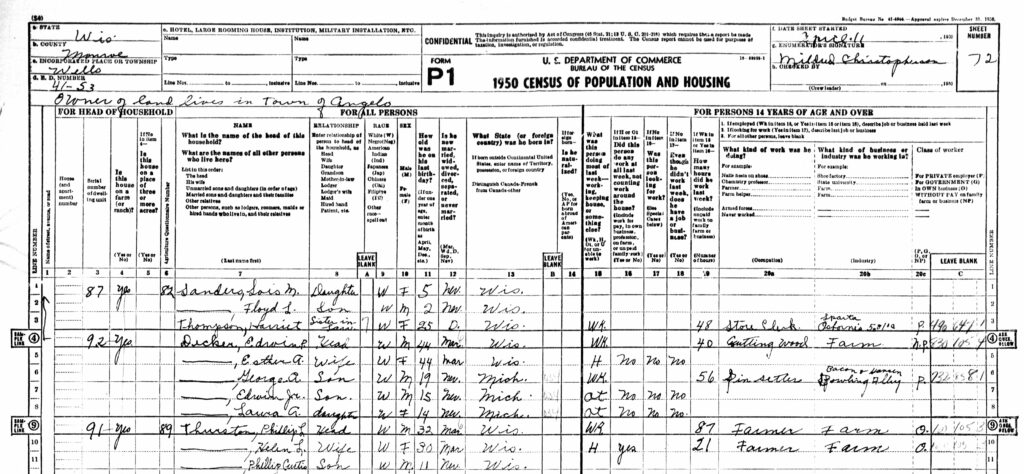By HANNAH SCHOLZE
Museum Services Associate, Monroe County Local History Room & Museum
The Monroe County Local History Room & Museum recently finished a massive undertaking to get the 1950 census for Monroe County indexed.
A team of 15 volunteers worked together to make it possible, each working on a specific portion of the county, and finished in just a few months.
According to Local History Room Director Jarrod Roll, “It was very helpful having so many people indexing who were familiar with local family names. In some cases, volunteers were able to index their own families or even themselves. Thank you to our amazing volunteers who helped make this possible.”
The 1950 census was publicly released for the first time on April 1, 2022. According to law, personally identifiable information from U.S. censuses cannot be released until 72 years after the date of completion. Consequently, every 10 years, genealogists and historians wait with bated breath for Census Day (typically April 1) for the release of the next available decennial census dataset from the National Archives.
The population schedules for the 1950 census include standard information such as first and last name, age, birthplace, relationship to head of household, marital status, residence, and occupation. However, unlike earlier censuses, census takers for the 1950 census were much better at recording an accurate address for each household as well as the number of hours each individual worked the previous week. Supplemental questions about residence, parentage, schooling, wages, and family information were asked of six individuals on each page (every fifth person) instead of just the two done in 1940.
In the process of getting the 1950 census indexed and compiled for the county, staff and volunteers came across some unexpected occupations that had not been readily seen in earlier censuses. More than 100 residents in the county — mostly women — worked as either tobacco sizers or sorters. Several other people worked as either mold makers or figurine trimmers for a novelty company in Sparta, while a handful from the Wilton area worked making, mending, or sorting burlap bags.
Additionally, the 1950 census reveals a number of teenage boys working as pin setters at local bowling alleys, and 77-year-old Otto Schmitz of Melvina lists his occupation as “pool ball setter.”
Some other interesting occupations include Reginald Campbell of Leon, who does “custom chainsaw work”; Martha Gugler of Sparta, who sews chair covers; and Jessie Weber of Sparta, who is an “Elderly Lady’s Companion.”
The 1950 census is also different from earlier censuses in that large institutions were enumerated as a separate district instead of just part of the township or city ward in which it was located. Consequently, Monroe County has three institutions enumerated separately: the Monroe County Insane Asylum, the Wisconsin Child Center, and the VA Hospital. Individuals residing within the boundaries of Camp McCoy were also enumerated separately.
Altogether, Monroe County had more than 31,000 people living in it in 1950. Perhaps surprisingly, the enumeration district with the largest population was actually the VA Hospital. Over 1,400 patients and staff lived on the VA property in 1950. It had a higher population than all of Little Falls or Sparta Townships. Also of interest is that more people lived in the Village of Melvina in 1950 than all of Scott Township. Melvina’s population was 122; Scott Township’s, just 90.
The Monroe County 1950 Census Index is now searchable on the Monroe County Local History Room & Museum website (www.MonroeCountyHistory.org). It is currently a standalone index on the website but will eventually be included within the larger Monroe County Census Index, which includes Wisconsin State and U.S. Censuses from 1855 to 1920. Census record images can be ordered for a nominal fee.
Adding the 1950 Census Index to the website has pushed it to more than one million searchable records and photographs for Monroe County. Additional index updates to the website will occur throughout the next several months.
For more information, visit www.MonroeCountyHistory.org or stop into the Monroe County Local History Room, 200 W. Main St., Sparta. It is open from 9 a.m. to 4 p.m. Tuesday through Saturday. Admission is free.



